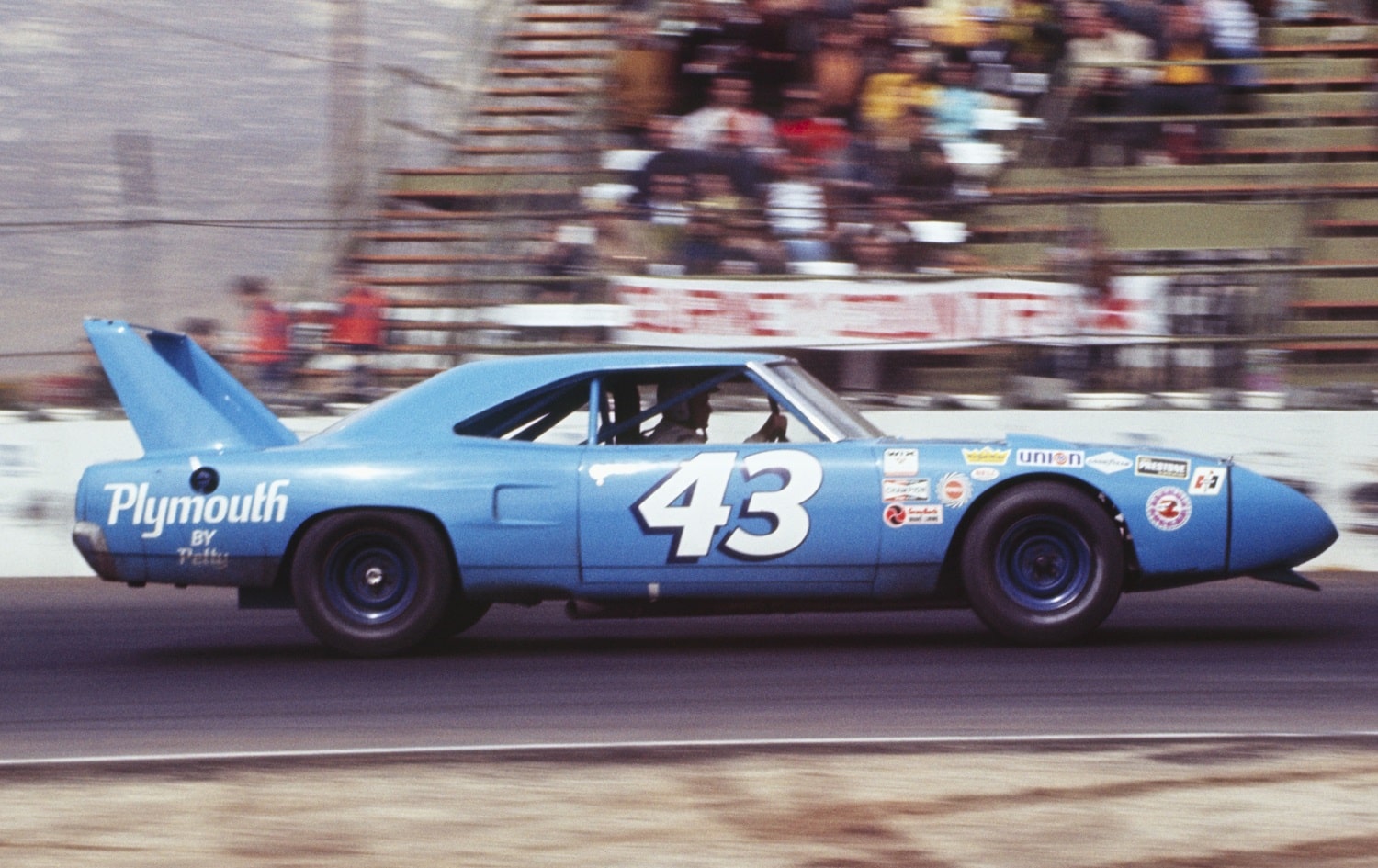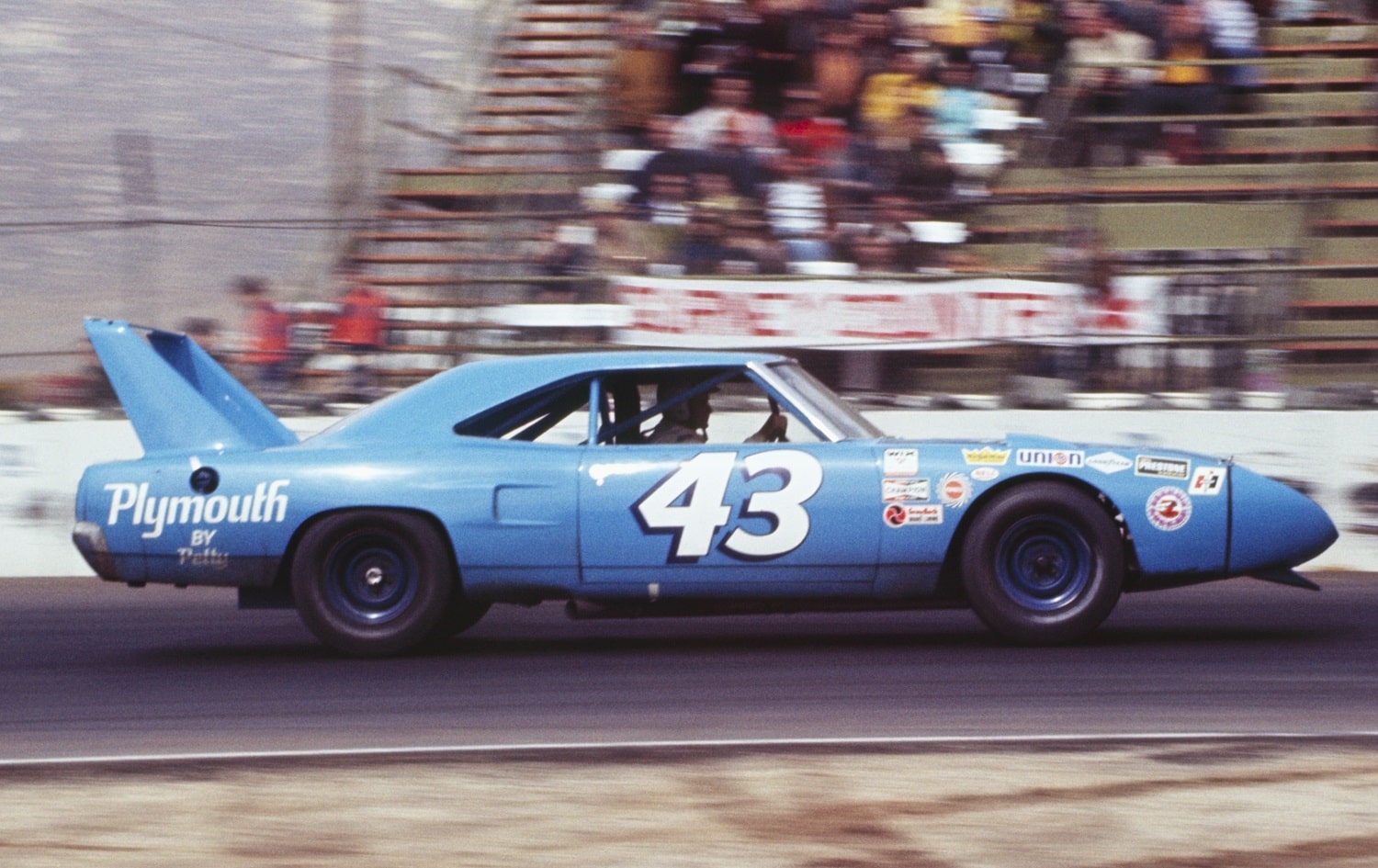NASCAR
NASCAR Scuttled the Richard Petty Superbird That Brought ‘The King’ Back to Plymouth

The three manufacturers’ Cup Series cars were already nearly indistinguishable from one another before NASCAR made it worse with Next Gen models bringing about parity Pere Rozelle would have loved. Half a century earlier, NASCAR cracked down after cars with the most distinctive looks in any racing series became so overpowering that even Richard Petty wanted one.
That’s saying a lot since Petty was coming off another season of double-digit wins.
Richard Petty and Plymouth were a winning combination
Just as we’ve likely seen the last of baseball’s 300-game winners in our lifetime, it’s a good bet that no one will come along and match the 200 NASCAR Cup Series victories Richard Petty amassed. For starters, the schedule is shorter than it was early in Petty’s career. Coupled with NASCAR taking the “stock” out of stock-car racing, there are too many drivers capable of winning in an era of too-few races.
Petty scored his first three wins driving Plymouths in 1960 and stuck with the manufacturer until the third race of the 1969 season, accumulating 92 wins. The pinnacle came in 1967, when he won 27 of 48 races on the way to the second of his seven series championships.
Petty slipped to “only” 16 victories in 1968 and finished behind David Pearson and Bobby Isaac in points. While that season was in progress, Chrysler was tweaking its Dodge Charger. It was a development that would shake up the Cup Series.
Richard Petty defected to Ford three races into the 1969 season

Chrysler’s new Dodge Charger was long and sleek, sporting a shark-like front end and a rear spoiler sitting 40 inches off the lid. It was an aerodynamic dream for competitive purposes, and NASCAR drivers started taking notice. Among them was Richard Petty, who immediately recognized the potential of the car.
Petty went to his Plymouth contacts and asked what they were doing to match the racing characteristics. To his disappointment, the answer was, “Nothing.” Petty persisted while on his way to a 16-win season, and the manufacturer wasn’t relenting. After all, Petty was a rolling billboard promoting a car that was proving popular in dealer showrooms.
Two races into the 1969 season, Petty was off to a solid start, winning at Middle Georgia Raceway by leading 363 of 500 laps and finishing second to Bobby Allison at Montgomery Speedway despite leading 125 of the 200 laps. Interestingly, those would be the only two races won by Plymouths.
The following week, Petty played the nuclear option by abandoning the manufacturer in favor of a Torino Cobra, the same model David Pearson would drive to the season title. Petty won at Riverside in his Ford debut, beginning a streak of 13 top-10 finished culminating with a win at Martinsville.
Petty wasn’t winning as many races, but he was driving home his point with Plymouth, which saw Allison defect to Dodge three races after Petty made his change.
Pearson won 11 races to Petty’s 10 and beat him comfortably on season points.
Plymouth relented, only to see NASCAR intervene shortly afterward
Realizing the loss of its best marketing tool was costing it money, Plymouth went to work on wooing Richard Petty back. Almost immediately after he left, the manufacturer went to work on cloning Dodge’s hot model. Using his old Belvedere as a starting point – an approach eventually abandoned –Plymouth mimicked the Dodge Charger’s front look and rear spoiler.
The finished version was a modified Plymouth Road Runner that the company branded as the “Superbird,” and Petty deemed it good enough to return to the fold in time for the 1970 season.
Bobby Isaac won 11 races and the 1970 season title in his Dodge Charger. Petty won 18 races in his new Plymouth, with four others combining for nine wins in Superbirds. That added up to 38 wins in 48 tries by versions of the high-winged cars.
It was too much for NASCAR officials, unhappy that teams were running cars violating the spirit of “stock” car racing. While leaving other aspects of cars largely unchanged, they downsized engines from the 426-cubic-inch behemoths to 305 cubic inches, negating the aero advantage. Dodge and Plymouth won 31 of 48 races in the first season with the new engine specs. But the count was down to 13 of 31 in 1972 as NASCAR moved away from many of the short tracks on previous schedules.
Got a question or observation about racing? Sportscasting’s John Moriello does a mailbag column each Friday. Write to him at [email protected].











